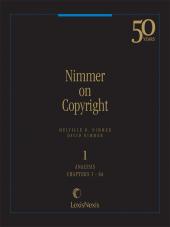
Types of treatises:
Treatises
These sources are widely-respected works written by scholars or experts in the field that are considered definitive sources within their subject area. As a result, you may find them cited in court opinions, briefs, and memos.
Treatise titles will often be in the format "[author name] on [subject matter]."
Hornbooks
These are still authored by scholars who are experts in the topic area of law, but are written more for a student and practitioner audience.
Nutshells
Most commonly used by students as a study aid, they give a quick overview of the law—fewer references to primary authorities. They may follow an outline type of format.
Others
All of the electronic databases have varying secondary sources, so it’s useful to check each to find a good treatise on your topic. Try searching for secondary sources and narrowing down by topic.
 Nimmer on copyright by
Nimmer on copyright by